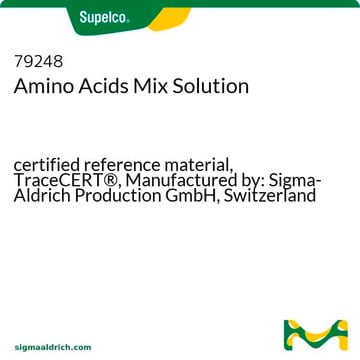About This Item
Recommended Products
vapor density
3.2 (vs air)
Quality Level
vapor pressure
22 mmHg ( 20 °C)
26 mmHg ( 25 °C)
Assay
≥99.7% (GC)
form
liquid
autoignition temp.
997 °F
shelf life
limited shelf life, expiry date on the label
expl. lim.
7 %
technique(s)
HPLC: suitable
impurities
≤0.05% water
evapn. residue
≤0.001%
refractive index
n/D 1.496 (lit.)
n20/D 1.497
bp
110-111 °C (lit.)
mp
-93 °C (lit.)
density
0.865 g/mL at 25 °C (lit.)
solvent strength ε (Al2O3)
0.29
λ
1 cm path, H2O reference
UV absorption
λ: 285 nm Amax: 1.0
λ: 310 nm Amax: 0.1
λ: 350 nm Amax: 0.01
SMILES string
Cc1ccccc1
InChI
1S/C7H8/c1-7-5-3-2-4-6-7/h2-6H,1H3
InChI key
YXFVVABEGXRONW-UHFFFAOYSA-N
Looking for similar products? Visit Product Comparison Guide
Signal Word
Danger
Hazard Statements
Precautionary Statements
Hazard Classifications
Aquatic Chronic 3 - Asp. Tox. 1 - Flam. Liq. 2 - Repr. 2 - Skin Irrit. 2 - STOT RE 2 Inhalation - STOT SE 3
Target Organs
Central nervous system
Storage Class Code
3 - Flammable liquids
WGK
WGK 3
Flash Point(F)
39.9 °F - closed cup
Flash Point(C)
4.4 °C - closed cup
Personal Protective Equipment
Choose from one of the most recent versions:
Already Own This Product?
Find documentation for the products that you have recently purchased in the Document Library.
Our team of scientists has experience in all areas of research including Life Science, Material Science, Chemical Synthesis, Chromatography, Analytical and many others.
Contact Technical Service









